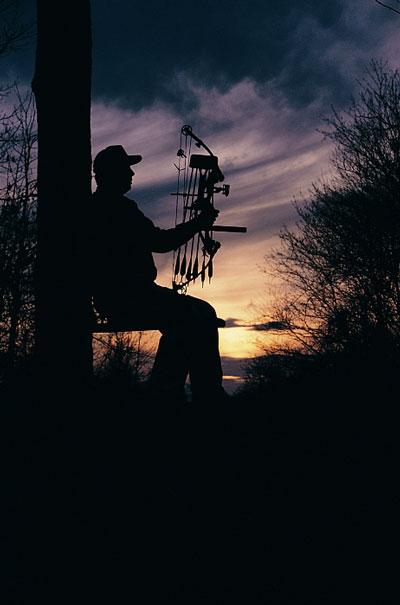 My hunting partner, Bill, threaded his way along a brushy fenceline, dodged some tractor ruts and slogged uphill to my location. His downward gaze and slumped shoulders revealed his thoughts without the need to speak them: “No deer today! Rascal Ridge is NOT a place for morning hunts!” he said emphatically. He had just burned half his weekly hunting time on an unproductive vigil. Bill furrowed his brow and tightened his jaw before asking the definitive question. “So, which is better, morning or evening?”
My hunting partner, Bill, threaded his way along a brushy fenceline, dodged some tractor ruts and slogged uphill to my location. His downward gaze and slumped shoulders revealed his thoughts without the need to speak them: “No deer today! Rascal Ridge is NOT a place for morning hunts!” he said emphatically. He had just burned half his weekly hunting time on an unproductive vigil. Bill furrowed his brow and tightened his jaw before asking the definitive question. “So, which is better, morning or evening?”
Bill is typical of countless bowhunters who must balance hunting time with multiple obligations. He has three toddlers, a job requiring regular overtime, a working wife, and myriad responsibilities. So when Bill budgets two hunting sessions during a week, he needs to make every minute count.
He needs to hunt within a time-management plan.
The secret to successful time management means optimizing deer sightings every time afield. Wise selection of hunting hours is the first step. Most stand sites, based on time of season and locale, offer premium hunting at one specific hour.
Tactical timing may very well be the sleeper technique of successful deer hunting.
Show Me The Data
The Pope and Young Club has compiled a significant amount of trophy whitetail data that includes the time of day taken. Records indicate 54 percent of P&Y entries were killed between 2 p.m. and sunset. Conversely, 31 percent were taken between sunrise and 10 a.m. The remaining 15 percent were harvested at midday. It should be noted these statistics reflect only whitetail deer taken within the organization’s parameters and restrictions, including a minimum antler score of 125 (with deductions). In reality, this is a tiny fraction of the total U.S. whitetail harvest.
Unsurprising, bowhunters harvest 78 percent of the trophies from an elevated perch.
I conducted an impromptu survey of a dozen treestand bowhunters and was greatly surprised when, without hesitation, they selected evening hours as the favored hunting time. The reasons ranged from better hunting opportunities to an inability to get out of bed before sunrise. This informal survey, while admittedly unscientific, can shed some insight into the P&Y data.
Students of bowhunting can recognize that P&Y statistics tell only half the tale. The morning versus evening debate is not simply answered by the number of deer taken in a given time period. A scientific calculation would require the number of man-hours per harvest at a specific time of day.
A likely reason P&Y documented more deer harvested in the evening hours is logically simple and a reflection of my impromptu survey:
- Evening hours typically are more convenient.
- It is easier to hunt after work than before.
- Evening hours are warmer and more pleasant.
- Getting out of bed is not an issue.
No doubt, P&Y statistics show evening is a great time to hunt. But the kill factor alone does not reflect reality.
Related research and evidence suggests morning and evening are equally productive hunting times. Telemetry studies, trail monitor research, and deer vehicle accident surveys all conclude the greatest movement patterns are around sunrise and sunset. In fact, there seems to be little statistical variation between morning and evening deer movement patterns. Seasonal trends, such as the November deep rut, and late winter also hint of good hunting during off-peak hours. This is all good news for bowhunters.
Each segment of the day has a distinct allure. Morning signals revitalization, beginning with the brilliance of a starscape creeping gently toward the visual feast of daybreak. Evenings are more relaxed, gradually diminishing the hard edge of life to the cover of darkness. But, neither romance nor random selection will increase deer sightings. Time of day must be viewed as a hard and cold tactical decision.
Deer seasonal phases are the ultimate guide in selecting stand sites geared for specific times of the day. Early-season treestand hunting is predominately over food sources, rut-hunting is centered on buck movement patterns, and the late season again returns to food sources. Each of the seasonal trends offers a tactical decision regarding time of day.
Next: The Early Season, The Rut






